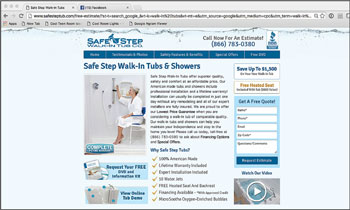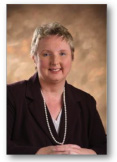Landing Page Web Form Optimization Maximizes Form Conversion Rate.
Once upon a time, every landing page had a fill-in form. Even when marketers had good information about a customer, the landing page was a good opportunity to confirm and update it. If you have marketing automation, then with return visitors you won’t need a form because you can identify the prospect through other means. Those means include web cookies, or the landing page is part of a larger nurture process. Further, with a form you need form optimization to maximize conversion rates.
Landing Page Form Optimization Best Practices
Sometimes forms are unavoidable, as when you’re marketing to a cold list. Or, collecting leads from a source that does not have good data appended. Here are a few best practices you can use for web form optimization. See the NetApp and Safe-Step examples below. They will make using the form as painless as possible for the user, and increase your form conversion rate:
- Keep the form short. Ask only for “must know” vs “nice to know” information. Be aware that with each additional field a certain percentage of your audience will abandon the form. Is it worth it to get minor and perhaps useless data?
- The most important information is almost always first name, last name and email. Once you’ve got those facts you can follow up the conversation by email.
- If your white paper or other offer will be fulfilled by email, make that clear in the copy. This will motivate the user to make sure their email is current and correct.
- Only ask for phone number if absolutely necessary, since many people will consider that an invasion of privacy and/or an invitation for a salesperson to harass them. Many people will submit a fake or switchboard number as a result.
- Be sure your forms are designed for easy integration with your CRM or other database, and that information will flow there automatically.
- Position benefit copy very close to the form, so the prospect is reminded of the reward for completing it.
- High-value offers can justify longer forms, since the prospect is willing to make a greater commitment in return for a bigger payoff.
- Start your form on the first screen reveal, so visitors can see it’s there.
- Include a privacy statement on your registration page to reassure prospects that their information will not be used inappropriately. Forms are scary. Verbiage such as “We will only use your email address to send what you requested” or “We will never sell or share your information with third parties without your permission” will significantly increase conversions.
- Program the form page so data is captured as they go, so if readers accidentally hit the “back” button their data is not lost.
Form Design
Form Optimization Best Practices Examples:
(click images to expand)


Learn more about landing page best practices to increase your leads and sales.
Author

Laurie B. Beasley
Laurie B. Beasley is co-founder and president of Beasley Direct and Online Marketing, Inc. We are a Silicon Valley direct marketing agency that has managed search, email, online, and demand generation campaigns for nearly 100 companies. Ms. Beasley serves as President of the Direct Marketing Association of Northern California. Laurie manages the eMarketing Roundtable for the BMA Northern California. She also instructs online marketing at UC Berkeley Extension and teaches for the Online Marketing Institute. Ms. Beasley frequently speaks on online marketing and demand generation topics for marketing organizations, including the DMA, BMA, AMA, Tech Council, and the Online Marketing Summit.
Our agency brings the latest marketing strategies to online and direct marketing. The company provides services in email marketing, search engine optimization, social media, pay-per-click (PPC) advertising, website design, media planning, direct mail marketing, lead generation and nurture campaigns, and database management. We help clients in both B2B and B2C marketing. Beasley Direct is privately held and headquartered in the Silicon Valley suburb, Morgan Hill, California. For more information, go to www.BeasleyDirect.com or call Laurie Beasley, President, at 408-782-0046 x21 or email lbeasley@beasleydirect.com.



